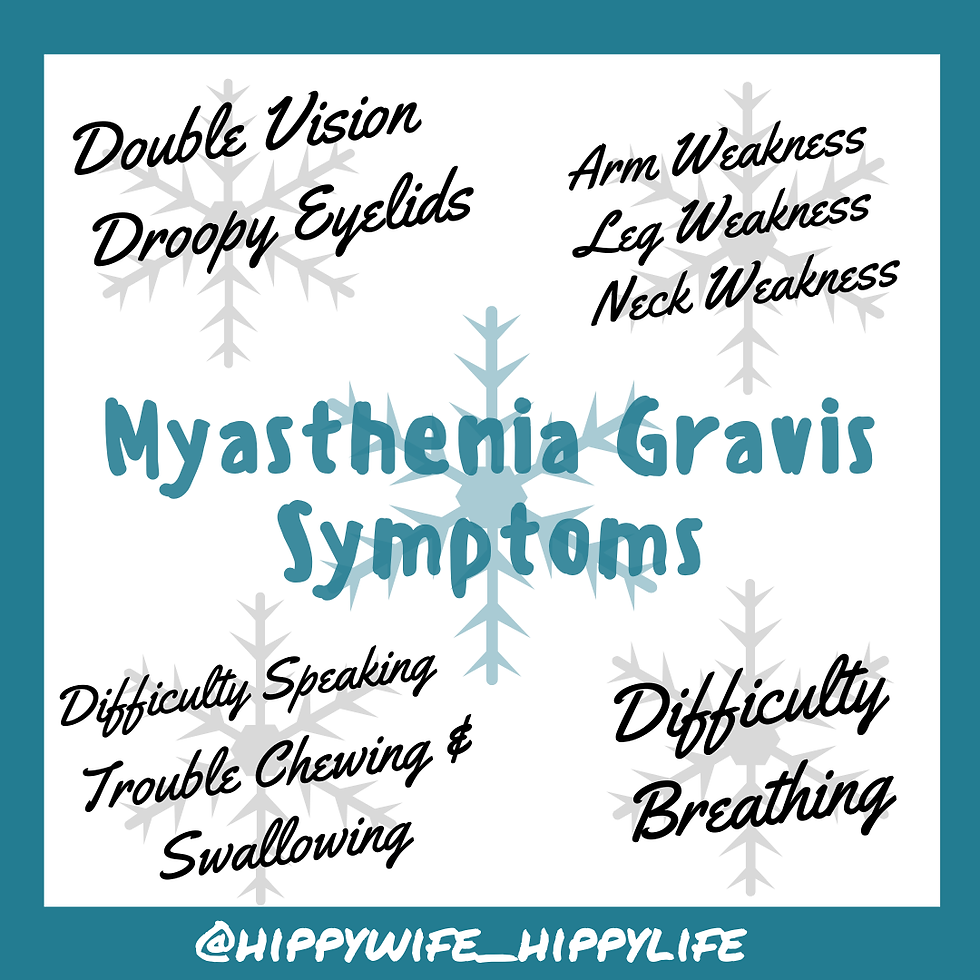I’m so glad you asked! Chances are you’ve never heard of it but don’t worry, you’re definitely not alone. Myasthenia Gravis is a rare illness with less than 200,000 cases in the United States per year. That’s less than .0006% of the entire US population. It’s an autoimmune neuromuscular disorder that affects all of the skeletal/involuntary muscles which include arms, legs, neck, eyes, and diaphragm affecting your ability to walk, see, and even breathe. It also includes the muscles in the jaw and face that help you form a smile, talk, chew, and swallow. It occurs when the junction where the nerves and muscles meet becomes impaired. Our muscles and nerves are healthy and strong but if there is no way for them to connect or a limited connection, their function is diminished thus causing significant weakness. The hallmark feature of this disease is that the more you use the muscles, the weaker they become. These symptoms can vary greatly from one person to another, from hour to hour, and even our response to treatments can differ significantly which means that what works for one person might not work for another. It’s no surprise that MG has earned the nickname the snowflake disease because no 2 cases are alike.

On top of the rarity and fluctuations in symptoms, most doctors don’t know or understand much about MG either. Believe me, I’ve met them. All of these factors make receiving a diagnosis challenging, forcing many people to suffer without a known cause or treatment for years. Me included! That being said, the odds of being diagnosed with Myasthenia Gravis are 20 in 100,000 or .0002%. You have a better chance of being injured by a toilet or winning an Oscar than getting MG.

Although a lot of doctors don’t know much about it, many neurologists do. That is the specialty doctor people like me visit (and visit often) to help manage their illness. I say manage because in addition to being rare, there is also no cure. That means that most patients will spend their entire life with fluctuating symptoms. Sure, we will have periods of mild and even no symptoms and some may even go into remission but remission is also rare. Our symptoms tend to vary minute to minute, hour to hour, and day to day. We may be fine one minute and then unable to talk or breathe the next.
There are certain things that make the disease worse but ultimately we don’t know when the symptoms will hit or what the severity of them will be when they do. We also don’t know how long those symptoms will last making it more than difficult to make plans or commitments.
"Without knowledge and understanding of the disease, people might assume we are just anxious, are exaggerating, or that we are attention seekers."
MG is just one of MANY invisible and chronic illnesses and spreading awareness is extremely important. Without knowledge and understanding of the disease, people might assume we are just anxious, are exaggerating, or that we are attention seekers. This is particularly dangerous for us because we can experience what’s called a Myasthenic Crisis where the muscles required to breathe are too weak thus requiring intubation. It’s also dangerous because we rely heavily on our support system!

June is Myasthenia Gravis awareness month and the more people who know, the quicker the diagnosis, the quicker we receive treatment, and the more likely we are to experience mild symptoms in the future. Please help me spread awareness not just for the ones who haven’t received a diagnosis but also for the ones with the disease who are judged, blown off, or misunderstood.

Thank you for sharing this post!
Комментарии